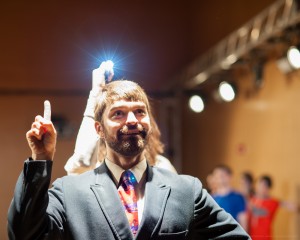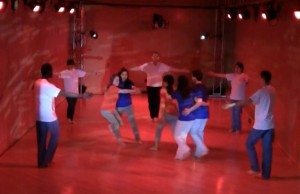Dance Your PhD: Grad Student Wins Contest
-
-
slice.mit.edu
Filed Under
Recommended

MIT is proud of its hands-on learning tradition but a new generation of scholars is putting feet to the test too. A case in point is the winner in physics of Science magazine’s 7th Dance Your PhD contest—MIT graduate student Hans Rinderknecht.
His performance, titled In The Ring: A Fusion Odyssey, explains how he uses light to trigger nuclear fusion. His actual dissertation topic is Studies of Non-Hydrodynamic Processes in Inertial Confinement Fusion implosions on OMEGA and the NIF, which he expects to defend in January.
Why did Rinderknecht decide to enter the Dance Your PhD contest?
“I have been dancing almost exactly as long as I’ve been studying physics: I began both in high school, and started studying both in earnest when I got to college. While a graduate student at MIT, I have continued performing with Quicksilver Dance, a local modern dance company, and have also been the company’s technical director (for the record, the choreographer and artistic director Mariah Steele happens to be married to me).

“So I decided to enter the contest because it combines two pursuits that I value and enjoy. It also poses the very interesting and valuable challenge of communicating my research to a very wide audience in a way they can relate to. Honestly, I think that knowing how to strip away the specialist knowledge and express the core ideas of your work in a generally understandable way is a really critical skill for researchers. Dance doesn’t let you hide behind your sub-sub-field’s protective wall of jargon: it makes you think about what concepts are really important, and how to get them across.
“I do think that dance and physics (or science in general) is a natural pairing. Physics is fundamentally the study of dynamics, i.e. movement, and dance is fundamentally the study of the movement of the human body. In addition to helping become a better communicator, I think the benefits of combining the two fields go both ways: movement can provide a scientist physical intuition for scientific processes, and scientific findings offer lots of great inspiration for dance research. But that’s a whole other conversation.”
Rinderknecht got lots of help from the MIT community. The piece was filmed in Simmons Hall, as an introduction to the annual Quicksilver Dance performance. Nearly all the performers were MIT students, and the theatrical lighting, lighting designer, and costumes were supported by the Simmons housemasters John and Ellen Essigmann, he says.MIT has some history with this contest. Professors Allan Adams, Rebecca Saxe, and Paula Hammond are judges. Learn about the contest history and previous MIT contestants.







